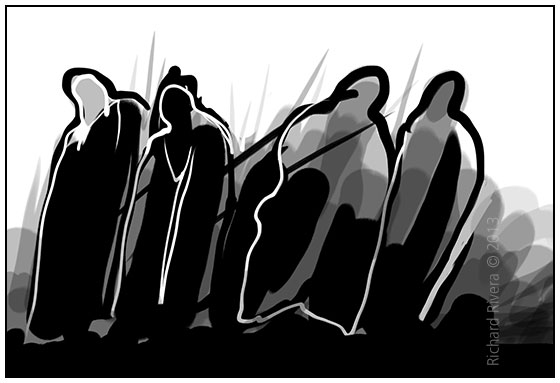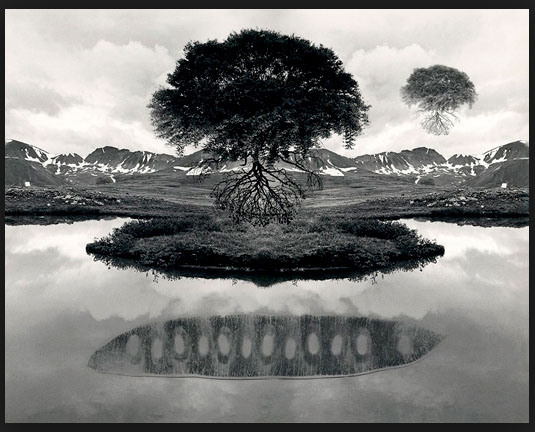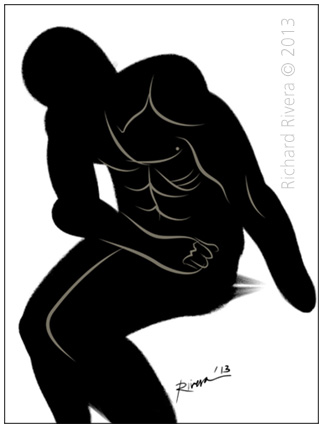
Your feedback and comments are appreciated. See Contact page for e-mails.
The Artist Photographer
by Richard Rivera
I have always loved to draw. My love of drawing ushered me to painting and illustration. However, when I was in my late teens I was also intrigued by photography. But being unable to afford a camera I did not fully explore my interest in photography until after college, when I had a steady income. What initially triggered my passion for photography was its ability to capture the verisimilitude of intense detail as well as the uniqueness of evanescent lighting conditions.
I discovered that the challenge
for painters who become photo-
graphers, is that photography
feels much more restrictive than
painting. While photography
enables a quicker response to
changing light conditions painting
allows fluidity and freedom of
compositional elements, form,
and raw color. Drawing is the
most fluid of all, allowing for
seamless transitional elements
between abstract, representational,
and basic forms to be present
simultaneously.
To bend photographic elements to function in the ways of painting or drawing, can push one towards the surreal, or collage, or contrived expressions. And many would also ask why try to force photography in that direction? Isn’t the inherent strength of photography the representational depiction of objects in the “real” world? (I can readily imagine the same kind of question, within the context of painting, being posed by the academy painters to the French Expressionists in 1875.) My only answer is that all too often the “straight” representations of the photographic image are so rooted in reality that compared to painting they are too limited, too sterile, or devoid of the special qualities so readily accessible through our imagination—or vision. The exception to that would be the kind of sequential or staged photographic work exemplified by Duane Michals (b. 1932)1 in the 1970s, or Jeff Wall (b. 1946).
The evolution of photography into its present digital form endows the photographer with an unparalleled degree of freedom in shaping the image to what his/her mind can conceive. I believe there is ample room under the “tent” of photography to accommodate all, including the purist who believes only in the representational depiction of the “real” world and its untampered image, as well as the imaginative photographer who will distort, colorize, composite, or enhance an image to give substance to their vision.
I also understand that for those embracing the purest form of an artistic discipline, any deviation from the orthodoxy can seem to taint the entire establishment as a polluting influence. But let us remember that black and white photography is also abstraction.
The best example of coloring beyond the lines of representational photography that comes to mind is the work of Jerry Uelsmann (b. 1934).2 His work retains enough of the real world image while also giving rise to otherworldly hybrids. And while some may dismiss his work as merely surreal, I believe him to be an amazingly imaginative photographer who in the 1970s pushed the limits of what the representational photographic image could be.
Uelsmann is an expert darkroom printer who routinely works with different negatives in several enlargers to “magically” combine and create images of startling “realism.” By comparison, with today’s digital tools and post-processing software, it is difficult to imagine a limit to what can be achieved and how high an image can soar.
It is a delicious vacation of the mind to be able to pick up a pencil or stylus and
draw or paint without constraint. But barring that, I find that the ultimate leeway in photography is in post-processing and the manipulation of tonalities, color, and shape that continue to intrigue me in the photographic image.
1. Duane Michals http://www.dcmooregallery.com/artists/duane-michals
2. Jerry Uelsmann http://www.uelsmann.net/#
http://lens.blogs.nytimes.com/2011/12/12/jerry-uelsmanns-analog-dreams/?_r=0
June 22, 2015



Untitled, 1969 by Jerry Uelsmann
Copyright © 2015 Richard Rivera & Rivera Arts Enterprises All rights reserved. No copying or reproduction of any kind without express written permission from Richard Rivera
Legal Disclosure Camera Sense and Eagles of New York are trademarks of Elk Partners LLC